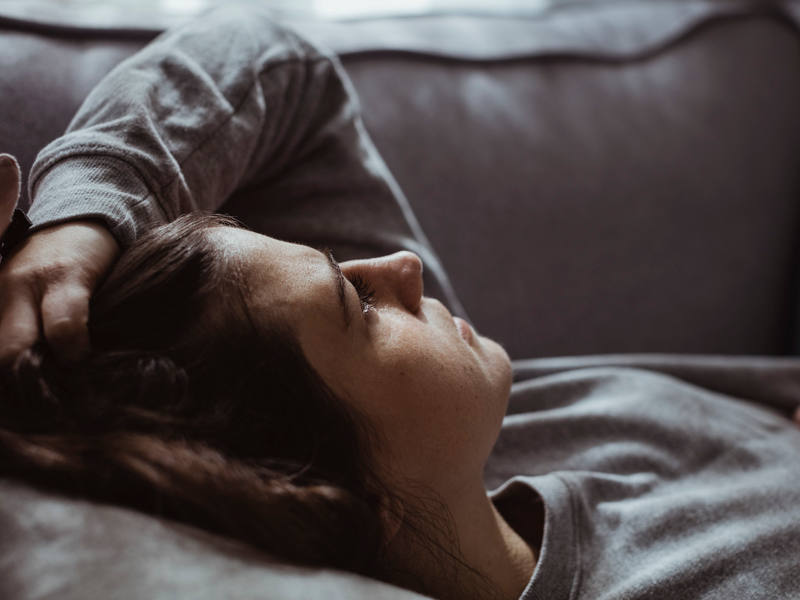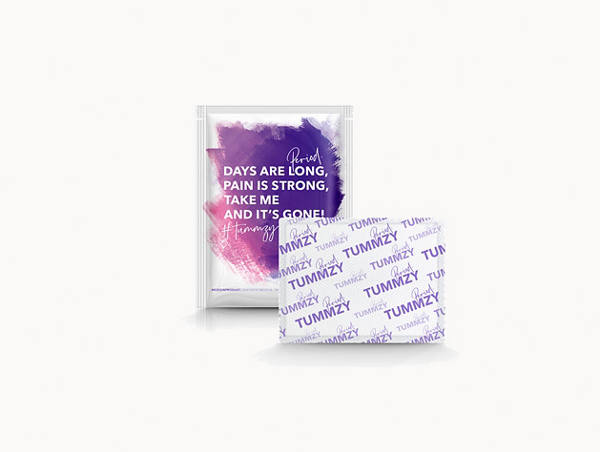
Women’s health
Being a woman isn’t always easy, yet it’s wonderfully exciting. From puberty to menopause: aside from the biological differences between women and men, there are medical conditions specific to each gender too.
Being a woman – being healthy
The female body
A woman will undergo fundamental transformations several times throughout the course of her life, reflected not only by physical changes but psychological too. While many women view their body with critical eyes, the female body actually performs wonders. From the menstrual cycle and pregnancy to menopause and medical conditions – we provide clear answers to the important questions facing women in each phase of their life.
Women in numbers
On average, the female cycle lasts 28 days. But what woman wants to be average?
5 tips on how women can stay healthy
There are many medical conditions that can’t be ruled out with certainty – nevertheless, women can do a lot for their health. The root of a healthy lifestyle is a balanced diet, exercise and relaxation. Cycle-based health, which addresses the different physical needs of the female body throughout the month and in each cycle phase, can also make a big difference to a woman’s well-being.
- Take time for yourself: give yourself some time out, schedule appointments just for you, relax outdoors in nature or at home – self-care is important.
- Cycle-based diet: calorie requirements rise in the second half of the cycle. The digestive system, on the other hand, is less active.
- Regular exercise: take regular exercise. Instead of staying put on the sofa, take a walk or go for a jog. Follow the example of many professional female athletes and discover the benefits of cycle-based training.
- Listen to your body: how do I feel, what do I need? This is especially worth asking on the days leading up to your period. This helps with premenstrual syndrome.
- Preventive check-ups: check your current state of health. With the Health Account, we will contribute to a CSS check-up.
Puberty
Puberty is the phase of life when a girl becomes a woman. Her body changes, friends become more important than family and her interest in sexual and romantic relationships grows.
When does puberty take place?
One girl will enter puberty at the age of 9, another at 14. The point at which a girl reaches puberty depends on a number of factors: genetics, diet, physical and mental health and more.
The body changes
Puberty is triggered by hormonal changes. The young girl starts growing pubic and underarm hair. Her breasts grow, as does her whole body, albeit not in the way she may want. Her body odour changes and skin problems can flare up, which is why blackheads and pimples are more common during puberty. The physical changes are at their strongest up to the age of 15 and end at the latest at 18.
First period
A girl will have her first period (menstruation, menstrual bleeding) at some point between the ages of 10 and 16. This is known as the menarche. The onset of the period is signalled by a flow of white discharge in the preceding months. Periods can be very irregular at first, but then settle down to a rhythm of around 28 days. Many women have menstrual disorders. These can often be relieved with simple remedies.
Psyche & puberty
It’s not only the body that changes. Mood swings, fatigue, performance dips and behavioural changes are typical signs of puberty. This is not only due to hormonal changes but also to new connections between nerve cells in the brain.
Emotional chaos
Girls in puberty often feel misunderstood, even lonely. This is often coupled with difficulties in communicating with parents, with people at school or with friends. It’s not easy for them to deal with the changes in their body and the new feelings they’re experiencing. But this is all normal. The phases of the menstrual cycle affect their mood too.
Menopause
The fact is, every woman reaches the menopause, also called the climacteric, at some point. This is the phase of life in which a woman transitions from being fertile to no longer being able to conceive. Lasting for a total of 5 to 10 years, every woman experiences this phase of hormonal change very differently. Some suffer from moments of extreme discomfort while others enjoy liberated self-realisation.
What are the signs of the menopause?
Most women find it all starts in the mid-40s, while for others it can be earlier. There are a number of indications:
- bleeding changes and becomes heavier, more painful or also lighter.
- the menstrual cycle fluctuates: sometimes it’s only 14 days, other times weeks until the next period.
- headaches, joint pain.
- weight gain – it becomes more difficult to keep the weight off.
- hot flushes, palpitations, shivering.
- vaginal dryness.
- mood swings, restlessness, sleep disorders.
The phases of the menopause
Premenopause is the time before the first irregularities in the cycle. Hormonal changes already start taking place in the body from the age of 40.
Perimenopause is the time period before and after menopause. At first, the body releases too little of the progesterone hormone, which leads to a surplus of oestrogen. The body’s oestrogen level can rise excessively at times. Later, oestrogen production then decreases. As the woman’s egg supply starts to run out, ovulation and menstruation occur less frequently.
A woman’s last menstrual period is called the menopause. On average, women are 51 years old at this time, but menopause age ranges from 40 to 60 years.
Postmenopause begins one year after the last period and can last several years. This is because the body needs time to get used to its new hormone levels. Progesterone and oestrogen levels are permanently low.
Gender medicine
For many years, medicine made no difference between genders. Men were considered the prototype – leading to sometimes problematic consequences for women. In the meantime, the field of gender medicine has become established, with researchers now examining these differences and drawing attention to shortcomings.
Typical medical conditions
Gender-specific medicine is important. After all, women have different symptoms. A heart attack in women, for example, is more likely to present with shortness of breath, back pain and cold sweat.
But which illnesses are typical? These medical conditions occur frequently in women:
-
menstrual complaints such as premenstrual syndrome, PMS for short
- iron deficiency
-
vaginal mycosis
- endometriosis
-
incontinence / incontinence after childbirth
- osteoporosis (bone loss)
-
bladder infection
- overactive thyroid
- migraine
-
depression
- breast cancer
Psychological changes and mental health problems in women
New stages of life present us with new challenges. This can throw our mental stability off balance. It all starts with the sharp mood swings experienced during puberty; but also pregnancy and the new role of motherhood can have a negative impact on a woman’s mental well-being. And the hormonal turbulence of menopause often has psychological effects in the form of nervousness, irritability and sleep disorders.
Self-care is important
We women know how to cure a cold, treat our children's fever and how much exercise is important. But it's just as important to look after our own mental health. Try these simple tips.
- Accept yourself: no-one’s perfect. Listen to your feelings and the signals your body sends.
- Set boundaries: pay attention to what’s good for you and what’s harmful. Think of yourself, even if others don't like it. Admittedly, this takes courage – but it's worth it.
- Talk about it: talking, listening, clarifying, putting thoughts into words – this helps to ease tension and pressure. And sometimes new perspectives or even solutions will emerge.
- Remain active: physical exercise clears the mind and is an important way of countering a stressful and stimulus-flooded pace of life.
- Keep up social contacts: we humans are social beings. Friendships provide support, comfort and security.
- Relax: just do nothing for a change. After all, when you're relaxed, you feel calm, at ease and are in a better position to address others. And the best thing is that doing nothing, costs nothing.
- Ask for help: you can ask for help and still not be a weakling. In particularly stressful situations, it’s important to reach out for help.
- Try something new: play an instrument, try a new sport, paint a picture – whatever you’ve been wanting to do for a long time. Dedicate your attention to new topics.
- Restrict news consumption: staying informed is important. But reading, seeing and hearing news on a non-stop basis can lead to feelings of stress and anxiety. We recommend that you turn off automatic notifications.
- Reduce stress: introduce more calmness into your day, as stress has a massive impact on hormone levels and health. Try these simple mindfulness exercises.
Get help
Stress at work, caring for loved ones or the death of someone close can lead to a state of permanent overload. Burnout or depression are diagnosed more often in women. In any case, it’s important not to remain alone with your problems. Talk to your partner, a friend, seek advice from professionals or find therapy.








